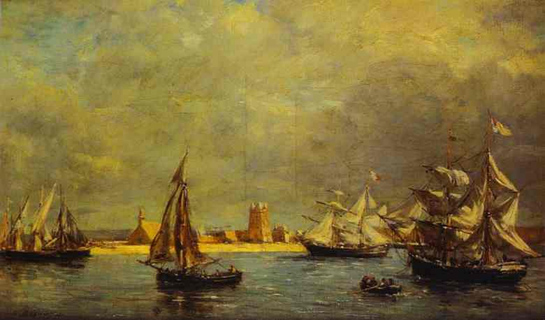While reviewing the pictures exhibited in the Paris salon of 1869, the critic Jules Castagnary was struck by the fresh and light-filled canvases of Eugene-Louis Boudin, a relatively little known painter from Normandy who seemed to have hit upon a new genre of seascape – “which is his alone, and which consists of painting the beach and all those exotic figures from high society which summer brings to our coastal resorts. They are viewed from a distance, but what finesse and liveliness in these figures which, standing or sitting, move on the sand. How good they look in their surroundings and what a good picture the ensemble creates. The clouds move in the sky, the tide rises, the breeze plays with flounces and skirts. This is the ocean and you can almost smell the salty fragrance.”
Boudin (1824-1898) is still a somewhat unsung hero of nineteenth-century French painting. A fine artist in his own right, with a great ability to catch transient effects of light and weather – Corot called him “le roi des ciels”, “king of the skies” – he had a significant influence on the young Monet and played an important formative role in the development of Impressionism. Until now there have been few displays of his work in this country; but a fine new exhibition of nineteenth-century marine painting at the Bowes Museum, near Darlington, sets out to make amends for this neglect by putting Boudin centre stage. Entitled “Boudin, Monet and the Sea Painters of Normandy,” this is a compact and refreshingly well defined show. It charts the rising popularity of the Norman coast among French (and some English) painters of the nineteenth century; it reexamines Boudin’s role in establishing the beach, peopled by holidaymakers, as a subject popular with artists and art collectors...

Boudin, Monet and the Sea Painters of Normandy, at the Bowes Museum
30-11-1999

